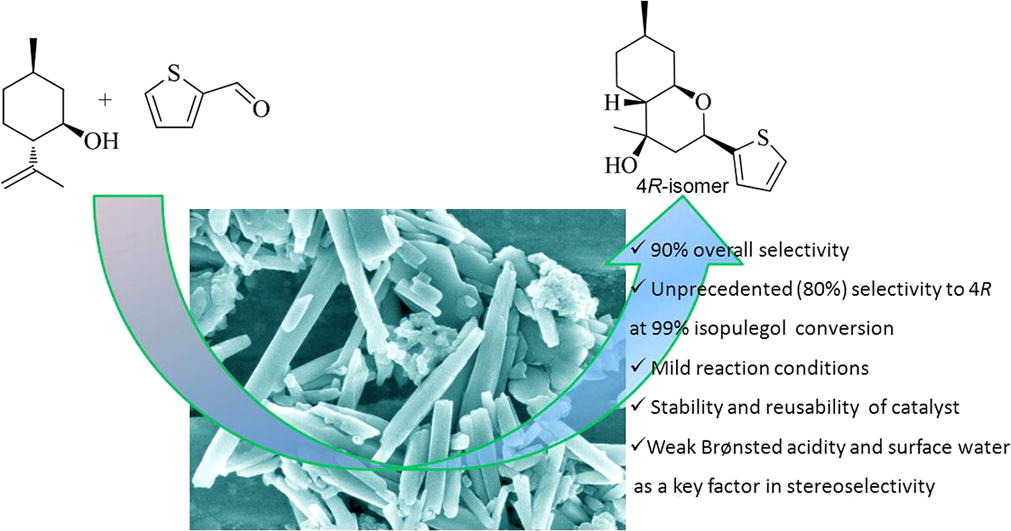В журнале Journal of Catalysis, (IF 6,759I) опубликована статья с участием сотрудников Института - г.н.с. ЛФАВ, д.х.н., проф. РАН К.П. Волчо и зав. ЛФАВ, д.х.н., проф. Н.Ф. Салахутдинова:
Highly selective Prins reaction over acid-modified halloysite nanotubes for synthesis of isopulegol-derived 2H-chromene compound.
A.Yu.Sidorenko, A.V.Kravtsova, A.Aho, I.Heinmaa, J.Wärnå, H.Pazniak, K.P.Volcho, N.F.Salakhutdinov, D.Yu.Murzin, V.E.AgabekovJournal of Catalysis, Volume 374, June 2019, Pages 360-377
https://doi.org/10.1016/j.jcat.2019.05.009

Abstract
Prins reaction of terpenoid (−)-isopulegol with thiophene-2-carbaldehyde giving in substituted octahydro-2H-chromen-4-ol (as 4R- and 4S-diastereomers) was studied for the first time over a series of halloysite nanotubes (Dragon Mine, USA), treated with 1–30% HCl. Materials have been characterized by MAS NMR, XRD, XRF, N2adsorption, FTIR with pyridine, SEM, TEM and thermal analysis methods. The quantitative data on the effect of acid treatment conditions on the content of structural units of halloysite are presented for the first time. The effect HNT treatment conditions, reaction temperature, catalyst loading, initial concentration of substrates on overall selectivity and 4R/4S ratio was studied. The diastereomers ratio decreased from 6.5 for air-dry nanotubes to 3.6 for counterparts dried at 350 °C, which clearly indicates formation of 4R-isomer on weak Brønsted acid sites At 99% isopulegol conversion in cyclohexane over HNT treated with 5% HCl an unprecedented selectivity towards 4R alone (ca.80%) was achieved close to the sum of both diastereomers on a commercial montmorillonite K-10. The 4R/4S ratio decreased with an increase in the concentration of acid sites. The excellent selectivity on halloysite was due to the predominance of weak acid sites. On the contrary, a low chromenols yield (ca. 30%) was observed over strong Brønsted acid (resin Amberlyst-15) related to direct formation of dehydration products from the substrates. Kinetic modelling shows a substantial difference in the order to the catalyst for the dried at 110 °C resin (1.1 ± 0.12) and air-dry halloysite (1.95 ± 0.09) for the target 4R-isomer formation, which clearly indicates the key role of water in the reaction. Based on experimental results and kinetic modelling a dual mechanism of halloysite action was proposed implying formation of an intermediate with the reagents and transfer of the surface water to the intermediate giving chromenols. Stability of the catalytic properties and reusability of HNT were demonstrated. Thus, modified halloysite nanotubes can be considered as a novel type of highly selective catalysts for the Prins reaction.
Альметрики:


